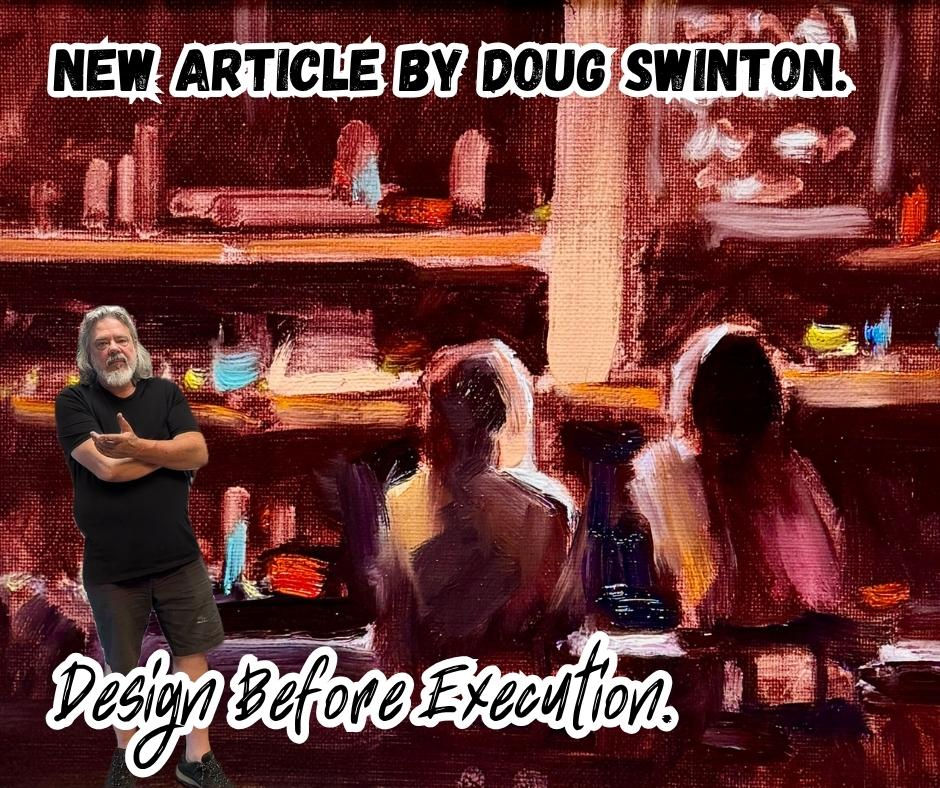Wood Profiles
- Doug Swinton

- Dec 5, 2014
- 3 min read
Updated: Nov 18, 2020
A lesson on mouldings

The mouldings pictured are the basic profiles of the framing industry. Profiles maybe wider, taller, have a deeper rabbet. They may be decorated with various finishes and embellishments. The quality of wood used in the finishing methods may vary with each manufacturer
There are trends in the framing industry just as in decorating and clothing. The companies that design mouldings take into consideration the colours, furniture, and types of art that are popular and make mouldings to suit. Mouldings may be discontinued when they go out of style, although many "classics" remained available for many years.
Number 1,2 and 3 are very common moulding shapes. These profiles are available in various sizes from 1/2" to 4", although numbers 2 and 3 may be as large as 8" wide. The finishes include everything from a coat of black spray paint to 23 karat gold leaf. Number 4, the reverse slope with bevel, is often used for contemporary art because of it's sleek design. It would also suit a diploma.
Number 5 is the classic Swan profile. Number 6 and 7 are fillets. Fillets can be used as a decorative lip within a rabbet of a frame (6) or in the opening of a mat (7). Number 8 is a type of fillet: a slip which can be used in many ways in the rabbet or in mats. Fillets are available in wide variety of sizes and finishes.
Number 9,10 and 11 maybe finished as frames or as liners. A liner is used in conjunction with other mouldings, such as combining number 11 with number 14. Used as a liner the moulding will be covered with linen fabric or perhaps suede or velvet. Liners are typically used as a "mat" for paintings on canvas and they're not used with paper mats. Number 12 and 13 are liners that combined fabric or painted panels with a finished lip. Number 14 is the Hogarth moulding, very popular with etchings because of its traditional black lacquer finish with gold beading accent on the top edge and lip. It is also available in other finishes.
Number 15,16,17, 18 and 19 are very popular from the smallest profile of 5/8" wide to 6 and 8 inch wide mouldings. The variations of finishes allow the moulding manufacturer to insert colour panels, colour lips or any of the hundred combinations of colours and patinas. A wide range of quality will be available in these profiles.
Number 21 is often used for shadow boxes in combination with number 24, the cap stem. It can also be used alone. The wedge, also called the "shadow box" frame was popular in the 1850s and is back in style.
Number 22 has a double rabbet. The double rabbet is often added to mouldings that can be used for shadow boxes. Number 23 is an extender that can be attached to a top moulding to create a deeper shadow box.
Number 24, 25 and 26 are stem mouldings and perfect for paintings on stretcher bars. They're often used for country and contemporary framing because of their simplicity. Care should be taken when fitting this moulding because of the thickness of the wood and the depth of the rabbet. More support maybe needed within the frame depending on the weight of the artwork or glazing. Number 27, 28 and 29 are floater frames. These are used with canvas paintings that have been stretched over stretcher bars. The frame attaches to the backside of the stretchers so the painting appears to float within the frame unit.
Number 30, 31 and 32 are trouble. They're difficult to cut and nearly impossible to hold in a vice. These profiles are adapted from house trim and are often used for inexpensive ready made frames. Be very cautious when trying to cut down a ready made frame made from this moulding. they often have a metal joining piece in each corner that is not easily seen.








This is a fantastic lesson! I love learning about the thought behind mouldings and how trends shape even these details. It just goes to show how design principles apply everywhere, even when you're shaping new worlds in a game like planet clicker .
AV在线看 AV在线看;
自拍流出 自拍流出;
国产视频 国产视频;
日本无码 日本无码;
动漫肉番 动漫肉番;
吃瓜专区 吃瓜专区;
SM调教 SM调教;
ASMR ASMR;
国产探花 国产探花;
强奸乱伦 强奸乱伦;
AV在线看 AV在线看;
自拍流出 自拍流出;
国产视频 国产视频;
日本无码 日本无码;
动漫肉番 动漫肉番;
吃瓜专区 吃瓜专区;
SM调教 SM调教;
ASMR ASMR;
国产探花 国产探花;
强奸乱伦 强奸乱伦;
代发外链 提权重点击找我;
谷歌蜘蛛池 谷歌蜘蛛池;
Fortune Tiger…
Fortune Tiger…
谷歌权重提升/ 谷歌权重提升;
谷歌seo 谷歌seo;
谷歌霸屏 谷歌霸屏
蜘蛛池 蜘蛛池
谷歌快排 谷歌快排
Google外链 Google外链
谷歌留痕 谷歌留痕
Gái Gọi…
Gái Gọi…
Dịch Vụ…
谷歌霸屏 谷歌霸屏
负面删除 负面删除
币圈推广 币圈推广
Google权重提升 Google权重提升
Google外链 Google外链
google留痕 google留痕
代发外链 提权重点击找我;
谷歌蜘蛛池 谷歌蜘蛛池;
Fortune Tiger…
Fortune Tiger…
谷歌权重提升/ 谷歌权重提升;
谷歌seo 谷歌seo;
谷歌霸屏 谷歌霸屏
蜘蛛池 蜘蛛池
谷歌快排 谷歌快排
Google外链 Google外链
谷歌留痕 谷歌留痕
Gái Gọi…
Gái Gọi…
Dịch Vụ…
谷歌霸屏 谷歌霸屏
负面删除 负面删除
币圈推广 币圈推广
Google权重提升 Google权重提升
Google外链 Google外链
google留痕 google留痕